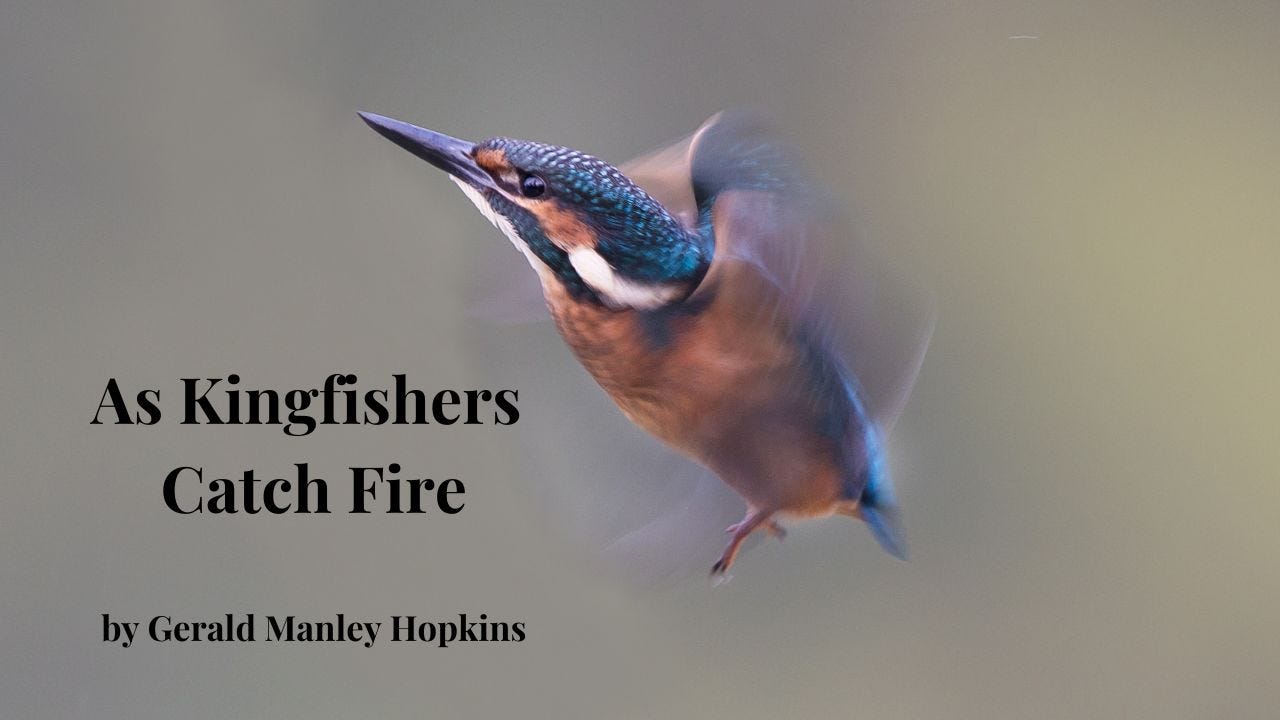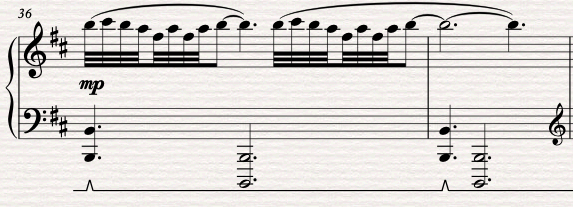As kingfishers catch fire, dragonflies draw flame; As tumbled over rim in roundy wells Stones ring; like each tucked string tells, each hung bell's Bow swung finds tongue to fling out broad its name; Each mortal thing does one thing and the same: Deals out that being indoors each one dwells; Selves — goes itself; myself it speaks and spells, Crying Whát I dó is me: for that I came. I say móre: the just man justices; Keeps grace: thát keeps all his goings graces; Acts in God's eye what in God's eye he is — Chríst — for Christ plays in ten thousand places, Lovely in limbs, and lovely in eyes not his To the Father through the features of men's faces.
The central theme of Gerard Manley Hopkins' poem is that every created thing is unique, and in simply being its true self, it reflects its Creator. Just like the sudden flash of a kingfisher or dragonfly, or the sound of a stone, string, or bell, each thing has its own beauty and joy. This applies to us as well. By embracing our true selves, we show our uniqueness and embody what is good, just and gracious. In doing so, we flourish, reflecting Christ's work in us. And, wondrously, we appear lovely in the eyes of God.
I was particularly moved by the lines, “For Christ plays in ten thousand places, Lovely in limbs, and lovely in eyes not his.” It’s a reminder that not only am I seen as lovely in the eyes of God, but so is everyone else. I’m called to see my fellow human beings through those same lenses.
Now, let’s turn our attention to the structure of the accompanying piano piece, which is inspired by the poem.
The central idea of the piece revolves around the opening theme (above), which reflects the kingfisher diving into and emerging from the water, followed by repeated bell-like tones. (I can’t help but wonder if this descent and ascent hint at death and resurrection, or perhaps fall and redemption...)
The quick kingfisher theme then transitions into the darting dragonfly theme. Beneath this, in the left hand, are Debussy-like bell tones that evoke the “tumbling stone/tucked string/bow swung in the hung bell.” These bell-like sounds echo throughout the piece.
The descending and ascending notes of the kingfisher theme evolve into a slow, chordal progression, forming the harmonic foundation for the rest of the composition.
The second iteration of this chordal pattern in the left hand introduces a melody in the right hand, which is interrupted by the dragonfly theme. The first half of the melody (from bars 32 to 35) is reversed in the second half (bars 38 to 41), mirroring the kingfisher theme. This full melody is then repeated and leads to the piece's climax in the middle section.
The piece concludes with a shortened, reversed version of its beginning, creating a chiastic structure.
I hope you enjoy it!
My hope is that these themes, and the piece as a whole, remind you that you were created to embrace your true self, reflecting Christ and always lovely in the eyes of God!
Naomi Brown








I liked this Naomi, and it was a deep well you brought us to! I enjoyed the piece's capture of nature's tones, and the piano was beautiful. You reassured us that our seemingly simple notes are enough and beautiful to God. Thanks Naomi!